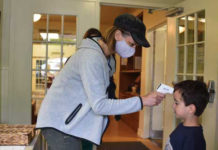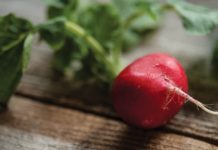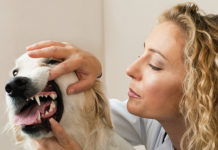
Even the healthiest of kids are susceptible to common childhood illnesses. Learn how to treat colic, ear infections and other illnesses with natural remedies.
Sniffles, coughs, earaches, tummy troubles, fevers—if you have kids, chances are you see your fair share of these symptoms around the house. Minor illnesses are a common and natural part of childhood, and an important part of developing the immune system.
Being sick is no fun, and parents want to do anything and everything they can to make their little ones more comfortable and get them feeling better, faster. On the other hand, mums and dads also worry about giving their children too much medication, and many are looking for natural alternatives to help soothe symptoms.
It is not only parents who are interested in natural alternatives; increases in antibiotic resistance, the risk of side effects and other potential issues with medications has led to a fair amount of interest in research on natural options for children. Here are some of the issues and natural approaches that have been getting the attention of researchers in recent years.
Ear infections
Known in medical speak as otitis media, the common middle ear infection wreaks havoc in the lives of many parents, especially those with younger children.
Littlies are more prone to ear infections partly because of their Eustachian tubes. These tubes, one per side, run from the middle ear to the inside of the upper throat and act to regulate air pressure in the middle ear. When you “pop” your blocked ears on a plane by swallowing, you are working your Eustachian tubes. In children, these tubes are shorter and straighter than in adults, which can make them more prone to blockage and infection.
Kids also have less resistance to many viruses and bacteria because their immune systems are just learning the ropes and don’t yet have the same experience as an adult immune system. As a result, otitis media is a common issue among children, and for some kids it is a frequent, ongoing concern.
For many years, the standard treatment for these infections was antibiotics and over-the-counter pain medications, such as Panadol. In recent years, though, the standard approach has been changing towards “watchful waiting,” meaning that antibiotics are no longer promoted right away.
Instead, the focus has shifted towards making children as comfortable as possible while waiting a few days to see if the infection will resolve on its own, before resorting to antibiotics. Exceptions include infections in children younger than two years as well as repeated otitis in young children. In these cases, treatment is often more aggressive, either because of the vulnerability of the child or because of the adverse effect that chronic ear infections can have on learning and language development.
Compresses and ear drops
Natural treatments for pain relief include warm compresses and ear drops. A compress can be a simple warm, moist towel that is applied to the skin over and around the affected ear.
Natural ear drops are also available, with some evidence to support the use of an olive oil and herbal extract combination that contains antibacterial and pain-relieving herbs such as St. John’s wort, garlic, mullein and calendula.
Before using ear drops for your child, let your doctor have a look in their ears first, just to make sure that the eardrum is intact and that there are no contraindications to using drops.
While natural medicines may soothe some symptoms in otitis media, where they really shine is in helping to prevent recurrent infections. If your child has repeated bouts of otitis, consider investigating some of the following.
Food allergies
One of the issues that contribute to otitis is inflammation of the Eustachian tubes. Food allergies can contribute to this inflammation and are worth ruling out in children who seem to be constantly suffering from otitis. A knowledgeable health care practitioner can work with you to determine which foods may be problematic.
Second-hand smoke
Children of smokers tend to suffer from ear infections more frequently than children of nonsmokers. Just another item on the long list of reasons to butt out.
Sweet prevention with xylitol
A natural product called xylitol has shown some promise in reducing the risk of otitis in children. In three studies, involving a total of more than 1800 children in daycare, regular use of xylitol-containing products such as lozenges, syrup or chewing gum, was associated with a significant reduction in risk of otitis.
The infection risk was reduced by 25 per cent, a pretty impressive decrease! As an added bonus, xylitol is naturally very sweet, so it is an easy sell to kids. And don’t worry about the teeth: not only is this sweet treat safe for teeth, but it also has actually been shown to reduce the risk of tooth decay because of its bacteria blocking abilities.
Coughs and sore throats
Honey
Mothers have known about the cough stopping, throat soothing benefits of honey for generations. Recently, science has been catching up and studies have been showing that mum was probably right.
In a 2010 study, buckwheat honey was investigated as a treatment for nighttime coughs in children (aged two to five) with colds. Compared to over-the-counter (OTC) cough medicines, honey came out on top, with a half teaspoon (2 ml) before bed showing better results in alleviating coughs.
This echoed the results of a 2007 study, in which parents also rated honey as a better treatment than dextromethorphan for nighttime coughs. Dextromethorphan is a cough suppressant commonly found in OTC cough medicines and has been the subject of much controversy in recent years.
The effectiveness of dextromethorphan and similar cough and cold medications has not been proven in children and has been associated with serious side effects, particularly due to dosing errors. As a result, in 2012 the Australian medicines regulator, the Therapeutic Goods Administration (TGA) carried out a review on the safety and efficacy of registered OTC cough and cold medicines for children aged two to12 years.
As a result, the TGA advised that children under six should not be given OTC medicines to treat cough and cold symptoms and that children aged six to11 years should only be given medicines to treat cough and cold symptoms on the advice of a doctor, pharmacist or nurse practitioner.
The Complementary Healthcare Council of Australia advises that in many cases, cough and cold medicines available in the Australian marketplace are already labelled and packaged in accordance with the regulators\’ conclusions.
Thyme and ivy syrup
Both thyme and ivy have a long history of traditional use for coughs. Studies on ivy extract have shown its safety in children; it is approved for use in medicines in Australia and has been used as a traditional cough remedy for both adults and children.
Colic and tummy troubles
A common cause of distress, especially in babies, the abdominal discomfort caused by colic can cause babies to cry for hours. Exhausted and worried parents are often told that they will just have to “wait it out.” While waiting, though, it is worthwhile to give some of these natural approaches a try.
What’s mum eating?
For breastfed babies, mum’s diet can play an important role in colic. Removing gassy or allergenic foods (cow’s milk, eggs, peanuts, tree nuts, wheat, soy, fish) from a breastfeeding woman’s diet can help to relieve colic in her baby in some cases.
Formula switch
For babies who cannot be breastfed for various reasons, formula is used instead. Unfortunately, some formulas can contribute to colic, and switching to different formula types may help.
Fennel
This after-dinner herb is great for breaking up gas and bloating, and can also be very helpful for colic. Studies have used fennel products on their own or in combination with other soothing herbs such as chamomile and lemon balm. Before using any herbal products for your baby, always check with a knowledgeable health care practitioner about proper dosing.
Probiotics
Researchers have found that supplementing colicky babies with the probiotic Lactobacillus reuteri can make a big difference in crying time.
In a group of 46 colicky babies, researchers supplemented about half with the probiotic and measured how many of the babies’ crying time was reduced by at least half over a course of 3 weeks. After 7 days, about 80 per cent of the probiotics-supplemented babies had at least a 50 per cent reduction in crying time compared to less than 40 per cent of the control group babies.
While we are on the topic of probiotics, let’s not forget their benefits in another common childhood issue: upset tummies and diarrhoea due to either antibiotic use or viruses. Although there are cases when antibiotics are a necessary and very helpful medication, antibiotics are (thankfully) becoming less frequently prescribed for children.
Unfortunately children sometimes develop diarrhoea when they take antibiotics, as the healthy bacteria in the gut become collateral damage in the antibiotic’s fight against disease-causing bacteria.
Probiotics can help reduce the risk of this type of diarrhoea; at least 16 studies have investigated their use for this purpose. Various species of probiotics have been found to be helpful, although Saccharomyces boulardii and Lactobacillus rhamnosus are the most studied in children.
Probiotics are also very helpful in preventing infectious diarrhoea, the type that is caused by viruses and that can travel quickly through daycare centres and other places where children congregate. In one study, three months of use of the probiotic Lactobacillus GG in children attending daycare was associated with a notable reduction in both intestinal and respiratory tract infections, as well as fewer days home sick from school.
Menstrual pain
Although not usually grouped with children’s issues, menstrual pain is nonetheless a common and sometimes debilitating symptom in girls under the age of 18. Many young women suffer terribly each month and must take over-the-counter or even prescription pain medications in order to help relieve their symptoms. Here are some natural interventions that may be helpful for menstrual pain.
Yoga
A 2011 study found that certain yoga postures (cobra, cat and fish poses) were helpful in reducing the intensity and duration of menstrual pain. With all of the other benefits that yoga can provide, with no side effects, it is certainly worth considering as part of a natural approach to menstrual pain.
Omega-3 fatty acids
Fish oils and other sources of omega-3 fatty acids may be helpful for pain due to their anti-inflammatory effect. In two different studies, young women with menstrual pain have reported reductions in pain intensity after three months of omega-3 supplementation. In these studies, use of fish oil resulted in a decreased need for pain medication and decreased pain scores.
Ginger
This spicy root is one of my favourite recommendations. It is cheap, easy to find and makes a delicious, warming tea that can be helpful for menstrual pain. At least one study has found that ginger, provided as 250 mg capsules four times a day, is as effective as OTC pain medications in its ability to provide pain relief.
Allergies
Itchy eyes, sneezing, sniffles, irritability. Allergies can really ruin a child’s (and parent’s!) day. Although antihistamines can be helpful for symptom relief, they do not treat the underlying cause, and many parents do not like the idea of having to give their child antihistamines every day.
Sublingual immunotherapy for allergic rhinitis
An approach that goes deeper than symptom relief alone is sublingual immunotherapy (or SLIT as it is sometimes called). This treatment approach has been around for many years. It has been extensively studied and proven safe and effective for both adults and children, yet many people have never heard of it.
SLIT involves taking daily drops under the tongue of very small doses of the allergen in question. It is similar in concept to allergy injections, but without the needle and pain and with few to no side effects. Daily use often provides lasting symptom relief within the first few months of use and can permanently eliminate symptoms when used long term, with just a couple of drops under the tongue a day.
Children are bound to feel unwell now and then. Fortunately, many natural approaches are available to help gently soothe coughs, ear infections, tummy aches and other common childhood complaints, to get your little one feeling better, faster.





























